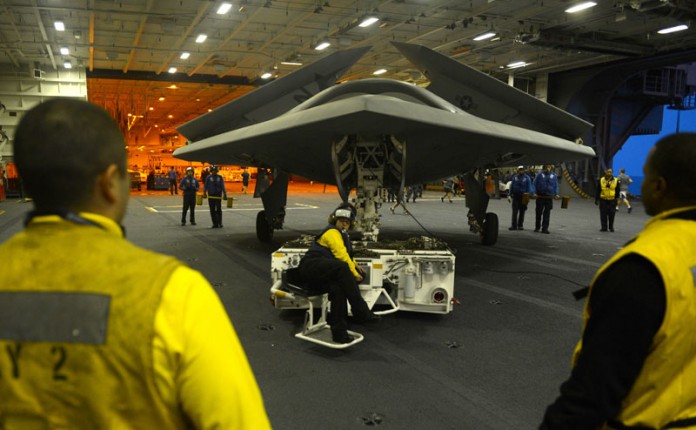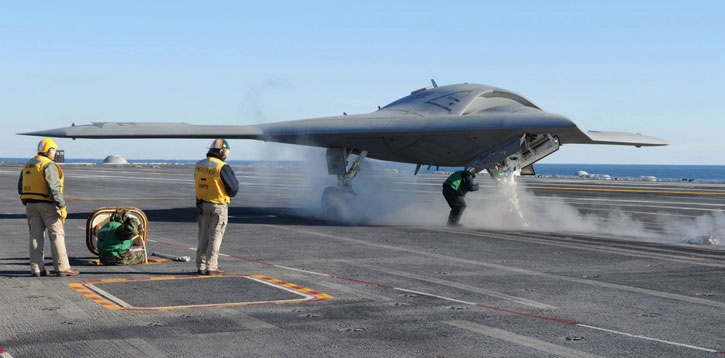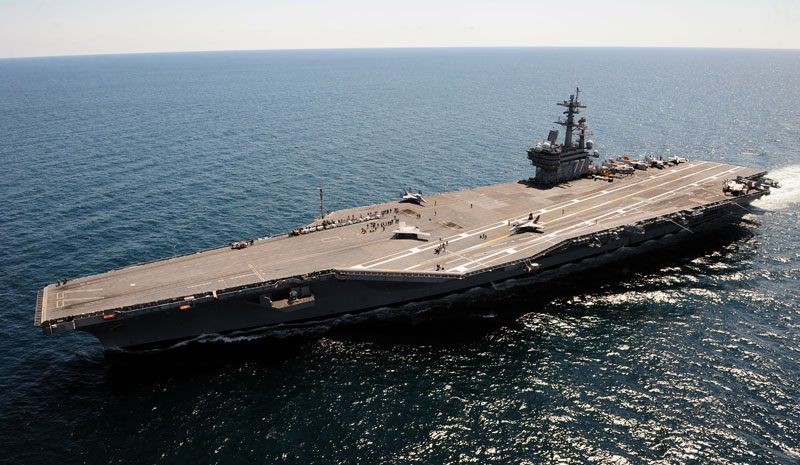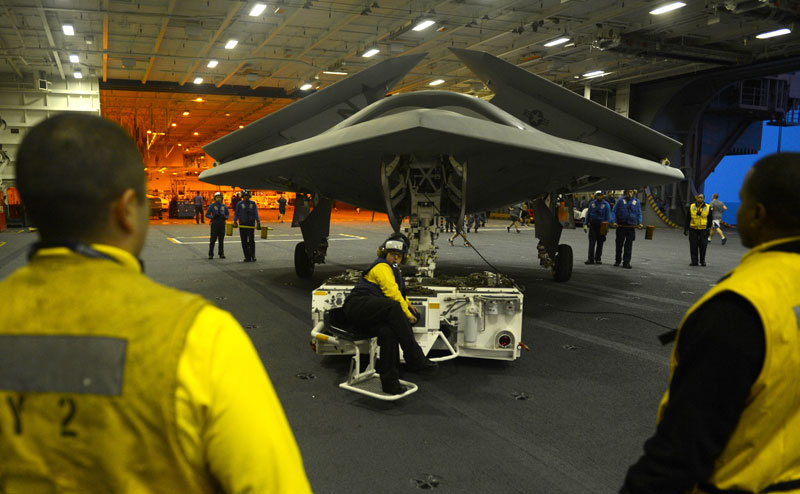


Future drone attacks could be more pervasive and less constrained by access permissions and host country support, once the US Navy goal to integrate unmanned systems capabilities on board its aircraft carriers is fulfilled. Current operations, conducted by the CIA and Air Force from land-based sites are constrained to the availability, permission and security provided by host nations, bases that should be located relatively close to the target and, hence, may compromise operational security and operator safety. New generations of drones to be operated by the US Navy from aircraft carriers could introduce a new capability, unbound by those restrictions.
Following a year-long delay the U.S. Navy released a draft request for proposal (RFP) for the Unmanned Carrier Launched Airborne Surveillance and Strike (UCLASS) aircraft on April 17, 2014. The draft release was delayed due to disagreements within the Navy, about the technical specifications for the future unmanned aircraft. The final RFP is expected later this year. The new carrier-operated drone is scheduled to enter service in the early 2021.
Four prime contractors are participating in the competition – General Atomics Aeronautical Systems Inc, Boeing, Lockheed Martin and Northrop Grumman. All four have already been contracted to carry out preliminary studies of a UCLASS type drone and are likely to submit their proposals for the final design. The current draft RFP calls bidders to submit proposals for design, development, assembly, delivery, testing and integration of the air vehicles segment of the UCLASS system. Other elements are likely to include sensors, datalinks, command and control systems.
The US Navy made history last year when the X-47B became the first unmanned air vehicle to launch off the CVN-77 George W. Bush aircraft carrier’s catapult and perform an arresting gear landing. In those cases the X-47B was alone on the carrier. Moving forward, the Navy plans to continue testing the unmanned drone operating as part of a carrier air group. These flights are scheduled to take place in the Atlantic Ocean this summer, aboard the USS Theodore Roosevelt (CVN-71).
UCLASS will be a key Intelligence, Surveillance and Reconnaissance (ISR) asset for future carrier air groups, enabling each carrier of the CVN-78 Ford class to support two continuous ISR orbits at “tactically significant ranges” over uncontested airspace.
In preparation for these flights an X-47B carried out its first night flight at Naval Air Station Patuxent River, Md. The flights planned for this summer will be carefully scripted to measure and account for any variables. The Navy will initially focus on low-tempo operations but could sometime in 2015 intensify the tempo if there is funding and an available aircraft carrier. Aircraft carrier are normally operating on operational cycles of 12 hours each, and all future unmanned assets would be required to align to these operational tempo.
The UCLASS will benefit from lessons learned through these evaluations. According to Rear Adm. Mat Winter, NAVAIR’s program executive officer for unmanned aviation and strike weapons, UCLASS will be a key Intelligence, Surveillance and Reconnaissance (ISR) asset for future carrier air groups, enabling each carrier of the CVN-78 Ford class to support two continuous ISR orbits at “tactically significant ranges” over uncontested airspace. The aircraft would have some stealth capabilities to enable it to operate in ‘lightly contested’ areas.
The Navy has budgeted the UCLASS capability at a $150 million per orbit. Assuming that two air vehicles can cover one orbit (if that aircraft is capable of flying for 14 hours), that means the maximum price point for a UCLASS air vehicle is about $75 million, USNI said, quoting industry sources. According to preliminary specifications released in June 2013 the goal for UCLASS was to conduct two unrefueled orbits at 600 nautical miles (1,111 km) or one unrefueled orbit at 1,200 nautical miles (2,222 km).
UCLASS drones will also have moderate stealth characteristics and internal payload carrying capacity to conduct light strike missions to eliminate targets of opportunity. Additional roles for the UCLASS could also be aerial refueling, albeit, given their limited payload capacity, such missions could be relevant primarily for other UAS.
The original spec called for a minimum payload capacity of 3,000-pound (1,360 kg), to include electro-optic/infrared (EO/IR) surveillance and signals intelligence capability similar to the current MQ-1 Predator and MQ-9B Reaper. The Navy would also like to have a modular radar payload to include synthetic aperture radar and moving target indicator (SAR/GMTI) as well as maritime area search radar capability. In addition, the aircraft will be able to carry 1,000 lbs (454 kg) of external load, primarily weapons.

















